
June’s Topic of the Month – Coping with Light Sensitivity
 June 30th, 2016
June 30th, 2016 Nakita Cambow
Nakita Cambow Blog
Blog 0 Comments
0 Comments
What is light sensitivity?
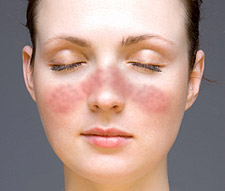 Many people with lupus experience a flare of their symptoms when exposed to sunlight. The most common symptom is for rashes to appear on the skin, affecting areas that are frequently exposed such as the face, neck, hands and feet. These rashes are called ‘photosensitive rashes’ and are one of the hallmarks of the disease which can be used to distinguish lupus from other diseases when being diagnosed.
Many people with lupus experience a flare of their symptoms when exposed to sunlight. The most common symptom is for rashes to appear on the skin, affecting areas that are frequently exposed such as the face, neck, hands and feet. These rashes are called ‘photosensitive rashes’ and are one of the hallmarks of the disease which can be used to distinguish lupus from other diseases when being diagnosed.
“I can’t have the sun on my skin as I blister and get a really itchy rash.”
Some people with lupus feel unwell after going out in the sun, even for a relatively short period of time (in extreme cases for as little as a few minutes). For example, they may develop migraine, nausea (feeling sick) or joint pains. The joints may even become tender to the touch and swollen. These are all manifestations of light sensitivity in lupus patients.
“I get awful red blistering spots all over my body, even on my eye lids; it hurts like hell and gets very itchy. I have suffered with this for years and no one knew what it was until my specialist at the Royal United Hospital in Bath diagnosed me with lupus. I wear sun cream summer or winter along with long-sleeved tops; even then I still get spots.”
“I wear a baby sunscreen of 70+ SPF. I apply it before I go out and am pretty much saturated with sunscreen. It helps but does not completely prevent joint pain, rashes/blisters etc.”
Other aspects of the disease may be exacerbated after sun exposure, including fever, pleurisy (chest pains on breathing in), kidney disease and more serious nervous system problems such as epilepsy (seizures).
People with severe light sensitivity may also be adversely affected by some artificial lighting, particularly those that emit more UV.
“Light sensitivity is a real problem for me. I wear sunscreen (Boots’ own 50+) in the house and sit in the darkest corner whenever I can.”
How does exposure to light cause a lupus flare?
Flares of photosensitive symptoms in people with lupus are caused by just a small part of the light spectrum called ultraviolet (UV) light. Ultraviolet light is so named because its wavelength frequency is higher (“ultra” is Latin for “beyond”) than the visible colour violet, and it is not visible to humans. UV light is capable of causing chemical reactions.
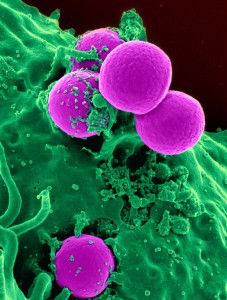 UVA-2 and UVB rays damage the cells of the skin (keratinocytes) and cause sunburn, skin aging and skin cancer. When these cells are damaged by the UV light it causes them to die. In healthy people without lupus, these dead cells are cleared away quickly and any inflammation caused by the sun-induced skin damage is short-lived (sunburn). However, in people with lupus, the skin cells may be more sensitive to sun-induced damage and there is increasing evidence that the dying (apoptotic) cells are not cleared away efficiently. As a result the contents of the dying cells may be released, including those found in their nuclei. These nuclear proteins (also called nuclear antigens) are particularly responsible for interacting with the immune system of a person who has lupus (especially with the famous antinuclear antibodies of lupus), encouraging it to become more active and cause inflammation and damage to various parts of the body. Some light sensitive people may also be harmed by visible light, most commonly, but not necessarily only, in the blue spectrum.
UVA-2 and UVB rays damage the cells of the skin (keratinocytes) and cause sunburn, skin aging and skin cancer. When these cells are damaged by the UV light it causes them to die. In healthy people without lupus, these dead cells are cleared away quickly and any inflammation caused by the sun-induced skin damage is short-lived (sunburn). However, in people with lupus, the skin cells may be more sensitive to sun-induced damage and there is increasing evidence that the dying (apoptotic) cells are not cleared away efficiently. As a result the contents of the dying cells may be released, including those found in their nuclei. These nuclear proteins (also called nuclear antigens) are particularly responsible for interacting with the immune system of a person who has lupus (especially with the famous antinuclear antibodies of lupus), encouraging it to become more active and cause inflammation and damage to various parts of the body. Some light sensitive people may also be harmed by visible light, most commonly, but not necessarily only, in the blue spectrum.
Is everyone with lupus light sensitive?
 Not everybody with lupus is light sensitive. About 60% of lupus patients get sun-induced rashes and a further 10-20% experiences other clearly sun-induced symptoms. The role of sunlight in the remainder is unclear. Only a few people are confident that sun exposure definitely does not affect them, as they can go out for long periods and sunbathe without any ill-effects then or in the following weeks.
Not everybody with lupus is light sensitive. About 60% of lupus patients get sun-induced rashes and a further 10-20% experiences other clearly sun-induced symptoms. The role of sunlight in the remainder is unclear. Only a few people are confident that sun exposure definitely does not affect them, as they can go out for long periods and sunbathe without any ill-effects then or in the following weeks.
New immune responses can take over a week to develop so the effects of sunlight will not necessarily be on the same day. In general, all people with lupus are advised to avoid sun exposure as it is one of the easiest ways of avoiding something which we know can make lupus worse. It is also advisable to be alert to the possible harmful effects of artificial lighting, computers and television sets.
“I am a black African (but am light-skinned). Before my diagnosis in 2011, I always thought that sunscreen was only for white people, but since summer 2013 things changed. It started with my leg. I have a shoe which has a strap in the ankle while the top bit of the shoe was open. I started noticing that the open bit got darker along with my face and any exposed part of my body was burned. My consultant advised me to get sunscreen so I used Nivea 50+. I have since got a hat, sunshades and I wear gloves even in summer.”
What can I do to protect myself against UV light?
“In order to do the things I enjoy, I have to give and take but I will not stop.”
To a large extent, photosensitive rashes and other sun-induced problems can be reduced by limiting exposure to UV light. Included below are a number of ways that you can protect yourself from sources of UV;
When going outside
- Try to keep sun exposure to a minimum by staying in the shade when possible
- Use sunscreen regularly, especially in the summer months (often from April to October)
- Avoid travelling to hot, sunny countries or mountainous areas where there is more UV light than in the UK
- Beware of the increased UV exposure with snow, sea or other water due to additional light reflected on to the body (especially the neck and chin)
- Even in the UK it is wise to avoid going out in the middle of the day in summer
- Sunscreen should be put on in the morning and reapplied during the day (at least once or twice) as it tends to get rubbed off or sweated away, particularly in warm weather, and don’t forget your hands and feet
- Sunscreen should be used even on cloudy days by light sensitive people because UV light can penetrate the cloud layer and you can never tell what the weather will be like later on
- It is also advisable to cover up with long sleeves and trousers and wear a wide-brimmed hat when out in the sun.
While these suggestions are effective for most people with less severe forms of light sensitivity, they would not be adequate for those with more extreme light sensitivity, who should look more closely at the recommendations in the Eclipse section of our website.
You can purchase hats, clothing and parasols which offer a Sunscreen Protection Factor (SPF) of 40 or above. A list of UK and overseas suppliers can be viewed half way down the page HERE.
“You can add Sunguard to your laundry and it gives it additional UV protection”
“Glowhite Washing Sachets actually add a UPF 15-20 to my clothes and also offer a 93-97% UV block. It saves a fortune in specialist clothes and scarves.”
 “I wear hats most of the time and I always sit under a tree. I will bike or walk in the early morning or evening so I am usually not out in the heat of the day.”
“I wear hats most of the time and I always sit under a tree. I will bike or walk in the early morning or evening so I am usually not out in the heat of the day.”
“I came across UV protection glasses that look like regular glasses (no tint), which is ideal for me as I don’t need a prescription lens and been told by my Doctor to protect myself even in winter.”
“I have bought an SPF 50 tent for the beach so that if we have visitors I don’t have to miss out. This was from a firm called Yello but there are lots on Amazon, or the Seaside Company.”
“I have a long-sleeved shirt that is SPF 50 (Wallaroo) for very strong sunlight that can’t be avoided.”
“I hate hats and wearing them makes me hot and causes my scalp to itch. I did some research online and now have two parasols that reflect UV rays up to 50+ which means I can keep safe.”
“I got a plain white shirt from a company called Rohan in a sale. It cost about £30, otherwise I could not have afforded it! It’s handy to throw over most outfits and I imagine I’ll get plenty of wear out of it!”
“I found an outdoor camping store with amazing high-tech shirts which are made out of unusually silky fabric that offer a 50+UV protection from light. They are cleverly designed and don’t sweat either. They sell them through kathmandu.co.nz; the special high-tech range is called “Living the Dream” but I am sure other hiking stores will have them too. They have a curved additional piece on the cuffs too to cover the back of your hand.”
“I have discoid lupus and struggle to find comfortable protective clothes to wear in the heat. I have tried UPF 50+ clothes and if they are made of swim suit type material they feel so uncomfortable and hot. I have just found t-shirts from Solbari (an Australian company). The t-shirt is so soft, made of bamboo, and has long sleeves with thumb holes to protect the back of my hands. I have worn them for a week in very hot sun and they have offered excellent protection; no rash, which is amazing for me. They also do fingerless gloves which are brilliant in the car. Delivery is prompt. This has been such a find that I wanted to share it.”
Sunsibility
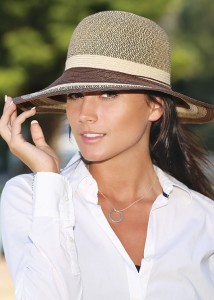 One supplier of UV protective products is Sunsibility. Many members of LUPUS UK have helped in the development of designs and the collection has evolved along with the awareness of the dangers of overexposure to the sun. The collection has now expanded into a colourful and stylish clothing range with accessories for all the family, creating a one stop shop for the ultimate UV Protection. Using a specialist SPF50 and breathable fabric, all garments are designed to give maximum protection against the sun’s rays (UVA & UVB) and are individually made to order. Sun creams, sunglasses & wide brim hats are all available alongside the UPF50+ collection as well as sun protective umbrellas, window films and UV Meters.
One supplier of UV protective products is Sunsibility. Many members of LUPUS UK have helped in the development of designs and the collection has evolved along with the awareness of the dangers of overexposure to the sun. The collection has now expanded into a colourful and stylish clothing range with accessories for all the family, creating a one stop shop for the ultimate UV Protection. Using a specialist SPF50 and breathable fabric, all garments are designed to give maximum protection against the sun’s rays (UVA & UVB) and are individually made to order. Sun creams, sunglasses & wide brim hats are all available alongside the UPF50+ collection as well as sun protective umbrellas, window films and UV Meters.
Quote ‘NEWS & VIEWS’ to get 10% discount off your first order at Sunsibility
Visit www.sunsibility.co.uk or call +44 208 224 2299 for a FREE brochure. You can also join them at www.facebook.com/sunsibility to keep up-to-date with our products and special offers.
In the car
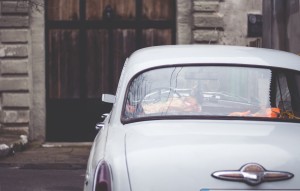 It is important to screen car windows against UV. The windscreen must allow at least 75% of light to be transmitted and the front side windows must allow 70%, otherwise you are committing an offence. Anywhere behind the driver’s seat (rear windows) can be as dark as you like. It is necessary to have your car screened by an expert technician and it is not permissible to apply yellow film to car windows as this is against safety rules.
It is important to screen car windows against UV. The windscreen must allow at least 75% of light to be transmitted and the front side windows must allow 70%, otherwise you are committing an offence. Anywhere behind the driver’s seat (rear windows) can be as dark as you like. It is necessary to have your car screened by an expert technician and it is not permissible to apply yellow film to car windows as this is against safety rules.
For more information about professional car window tinting, you can contact;
DermaGard is a transparent window film applied to the inside of your window that screens out more than 99% of UV and is virtually unnoticeable.
Bonwyke Ltd
Unit 3, Salterns Lane Industrial Estate, Salterns Lane, Fareham, Hampshire PO16 0SU
Tel: 01329 222299 Fax: 01329 822768
web: www.bonwyke.co.uk
email:sales@bonwyke.co.uk
Ultimate Tinting – Specializing in application of films and in window tinting for vehicles, the home and commercial premises.
Ultimate Tinting
Tel: 0800 011 2630
web: www.ultimatetinting.co.uk
In your home
Lighting
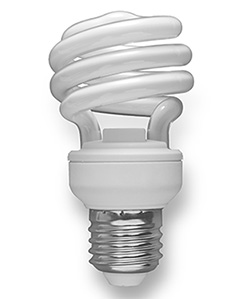 Certain types of artificial lighting tend to emit more UV and light from the blue spectrum than others. You can learn more about the effects of different types of artificial lighting on people with lupus HERE.
Certain types of artificial lighting tend to emit more UV and light from the blue spectrum than others. You can learn more about the effects of different types of artificial lighting on people with lupus HERE.
Best Option:
- Choose LED light bulbs with a colour temperature of 2700k.
- These LED light bulbs are usually called Warm White and have a lower output of the blue light spectrum. (Avoid Cool White and ‘superbright’ which have higher blue emissions).
- If possible choose a filament design. This will generally be stated on the packaging. (Usually a filament LED is comprised only of a glass bulb with a brass lamp holder, so avoid plastic based lamps or those with a plastic segment between the glass bulb and metal base).
–
Proviso:
- Although filament bulbs usually emit warmer light, you may find cold looking filament LEDs that are worse than some non-filament LEDs
- Cheap LED bulbs of all types are prone to flicker
- This is still a difficult market with insufficient product information so you will need to trial what you buy to find something tolerable for you.
–
Other tips for lighting include;
- Using fittings that reflect the light off the wall or ceiling, rather than shining directly on you
- Shielding the light; even clear glass or acrylic helps. The shield will be even better if it is covered with Dermagard film
- Having the light as far away from you as possible
- More smaller light sources are better than one larger one, e.g. 3 x 25W bulbs are better than 1 X 60W bulb
–
Windows
DermaGard is a transparent window film applied to the inside of your window that screens out more than 99% of UV and is virtually unnoticeable. Dermagard and other manufacturers now produce a very slightly tinted film that gives protection against UV and short-wavelength blue light, which is something the extremely light sensitive may wish to choose. Details of the supplier are available at the top of the page HERE.
In your workplace
Lighting
 Many workplaces use fluorescent tube lighting which emits UV and is often unsafe for light sensitive individuals. It is possible to purchase sheaths that are very easy to fit over fluorescent tube lights to screen out UV; this film tube is easy to cut, to shorten or to overlap to extend length.
Many workplaces use fluorescent tube lighting which emits UV and is often unsafe for light sensitive individuals. It is possible to purchase sheaths that are very easy to fit over fluorescent tube lights to screen out UV; this film tube is easy to cut, to shorten or to overlap to extend length.
In most workplaces insisting on warm white (2700K) is all that can be expected, and this should help a great deal if not completely; for home use a warmer white (2500k or less) or those with amber glass are to be preferred. It is the duty of the employer to provide these for light sensitive employees who have to work under fluorescent lights. Details of the supplier are available at the top of the page HERE.
“At work the Health and Safety Manager found light filters via the LUPUS UK Eclipse Support Group. Filters are a reasonable adjustment in terms of health and safety legislation for people with disabilities.”
Windows
If your working station is located next to a window, you may wish to request being moved to a different area, or alternatively you could ask your employer to provide DermaGard window film. Details of the supplier are available at the top of the page HERE.
Information for Employers
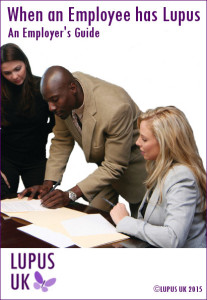 We have a couple of booklets about lupus in the workplace which may be helpful when seeking adjustments to your working area. The booklets are available to view and download HERE. We also have a factsheet called, ‘LUPUS and Light Sensitivity’, which is available to view and download HERE. These publications are also available in physical format, free of charge; just contact us to request them.
We have a couple of booklets about lupus in the workplace which may be helpful when seeking adjustments to your working area. The booklets are available to view and download HERE. We also have a factsheet called, ‘LUPUS and Light Sensitivity’, which is available to view and download HERE. These publications are also available in physical format, free of charge; just contact us to request them.
Medications
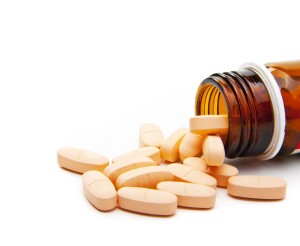 Some medications do help by damping down the immune responses and inflammatory processes. Steroids (for example, prednisolone) will help to prevent and treat lupus manifestations due to sunlight. However, it is always best to be on the lowest possible dose of steroids, so avoiding UV light and protecting yourself from it is still important even if you are on steroids.
Some medications do help by damping down the immune responses and inflammatory processes. Steroids (for example, prednisolone) will help to prevent and treat lupus manifestations due to sunlight. However, it is always best to be on the lowest possible dose of steroids, so avoiding UV light and protecting yourself from it is still important even if you are on steroids.
Hydroxychloroquine seems to be particularly helpful at preventing rashes, arthritis and pleurisy which may be sun-induced, but is not a replacement for sensible behaviour. Other drugs (such as azathioprine, methotrexate and cyclophosphamide) which are often used for more serious disease or to keep the dose of steroids as low as possible may also reduce the risks of sun-induced flares.
Which sunscreen is best?
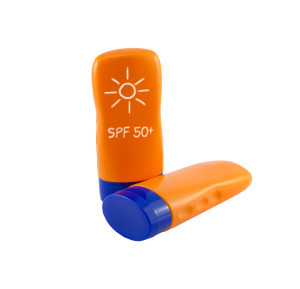 All sunscreens contain chemical filters which either absorb or block UV radiation. Broad spectrum sunscreens are intended to protect against both UVA and UVB radiation. Some sunscreens such as those in the Sunsense range also offer protection against visible light.
All sunscreens contain chemical filters which either absorb or block UV radiation. Broad spectrum sunscreens are intended to protect against both UVA and UVB radiation. Some sunscreens such as those in the Sunsense range also offer protection against visible light.
If you have lupus, you can ask your GP to prescribe high protection sunscreen. In many cases this will be Sunsense Factor 50 though some other brands may also be available.
SPF
Sunscreens in the UK have a Sunscreen Protection Factor (SPF) number. This indicates how long you can stay in the sun without burning compared to not wearing sunscreen at all. But this only applies to UVB radiation.
Some sunscreens may also be labelled as giving low to very high protection. This is directly related to the SPF number:
- Low protection SPF 6 to 10
- Medium protection SPF 15 to 25
- High protection SPF 30 to 50
- Very high protection SPF 50+
–
Star rating
When you currently buy sunscreen containing UVA protection in the UK you may notice a UVA star rating on the packaging. The stars range from 0 to 5 and indicate the percentage of UVA radiation absorbed by the sunscreen in comparison to UVB, in other words the ratio between the level of protection afforded by the UVA protection and the UVB protection.
Be aware that if you choose a low SPF it may still have a high level of stars, not because it is providing lots of UVA protection, but because the ratio between the UVA and UVB protection is about the same.
Applying sunscreen – more is best
Most people don’t use enough sunscreen. According to the British Association of Dermatologists, the body of an average adult requires at least six full teaspoons of sunscreen lotion. Make sure you are protected:
- Apply sunscreen 15-10 minutes before going outdoors
- Reapply when in the sun and then every 1 – 2 hours especially if perspiring heavily
- If using other cosmetics, apply the sunscreen first
–
“I have had great support from my GP and I get Sunsense (Australian sunscreen 50+) on prescription. I really like it as it is light, easy to apply and not perfumed.”
“I use Sunsense factor 50. It’s really good but can leave skin a bit oily after a few coverings in a day.”
“I use Nivea Protect and Refresh factor 50. I apply 3-4 times a day. I love it because it isn’t thick and creamy and therefore I don’t really need a mirror when applying it; perfect for work!”
“I use Uvistat 50 sunscreen but it is prescription only. They also do a lip screen in Boots.”
“I use Ambre Solaire F50 Sensitive for Children on my face, hands, neck and chest which are my most vulnerable areas. I use it every day, even throughout the winter months to protect me from light as well as sun.”
You can read more sunscreen recommendations and experiences in the comments section of this Poll in the LUPUS UK HealthUnlocked Community Forum HERE.
Read the article ‘The challenges of living with cutaneous lupus and taking care in the sun’ by Bláithín McGarry HERE.
Vitamin D and Calcium Deficiency
It has been noted that people with light sensitive conditions who avoid sunlight are at risk of vitamin D and calcium deficiency. You should ask your GP or consultant to test you for this, as you may need to take supplements.
Family members who spend a lot of time in screened houses and screened cars could also be at risk and should also ask to be tested.
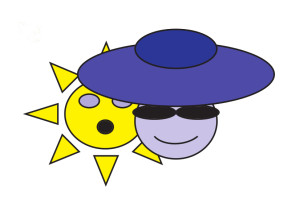 For more information, advice and case studies about light sensitivity in lupus, please visit the Eclipse Light Sensitivity Support Group Page.
For more information, advice and case studies about light sensitivity in lupus, please visit the Eclipse Light Sensitivity Support Group Page.
***Please note that this article is written for informational purposes only and should not be a substitute for professional medical advice or treatment. Do not delay seeking or disregard medical advice based on information here. Always seek the advice of your local family physician or other qualified health professional before starting any new treatment or making any changes to existing treatment. It is also advisable to consult a medical professional before making any changes to diet or starting alternative remedies, which may interact with other medications.***
Thank you so much to everyone who submitted their tips and experiences for this month’s topic. We’re sorry if we weren’t able to use your comment in the article this time.

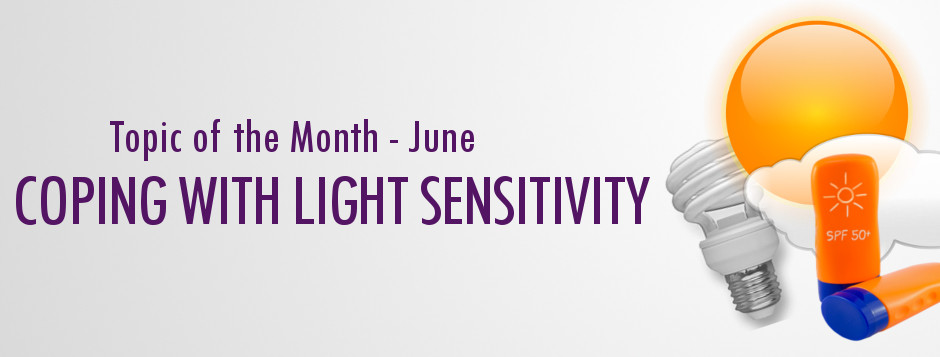

 ©2024 LUPUS UK (Registered charity no. 1200671)
©2024 LUPUS UK (Registered charity no. 1200671)